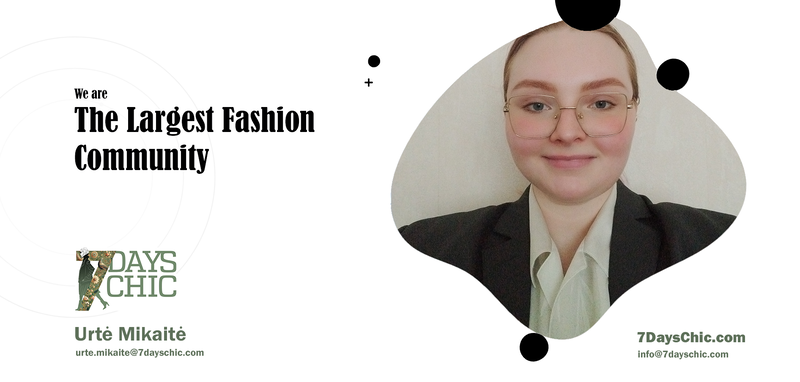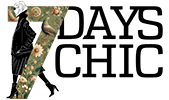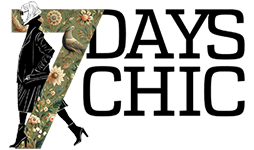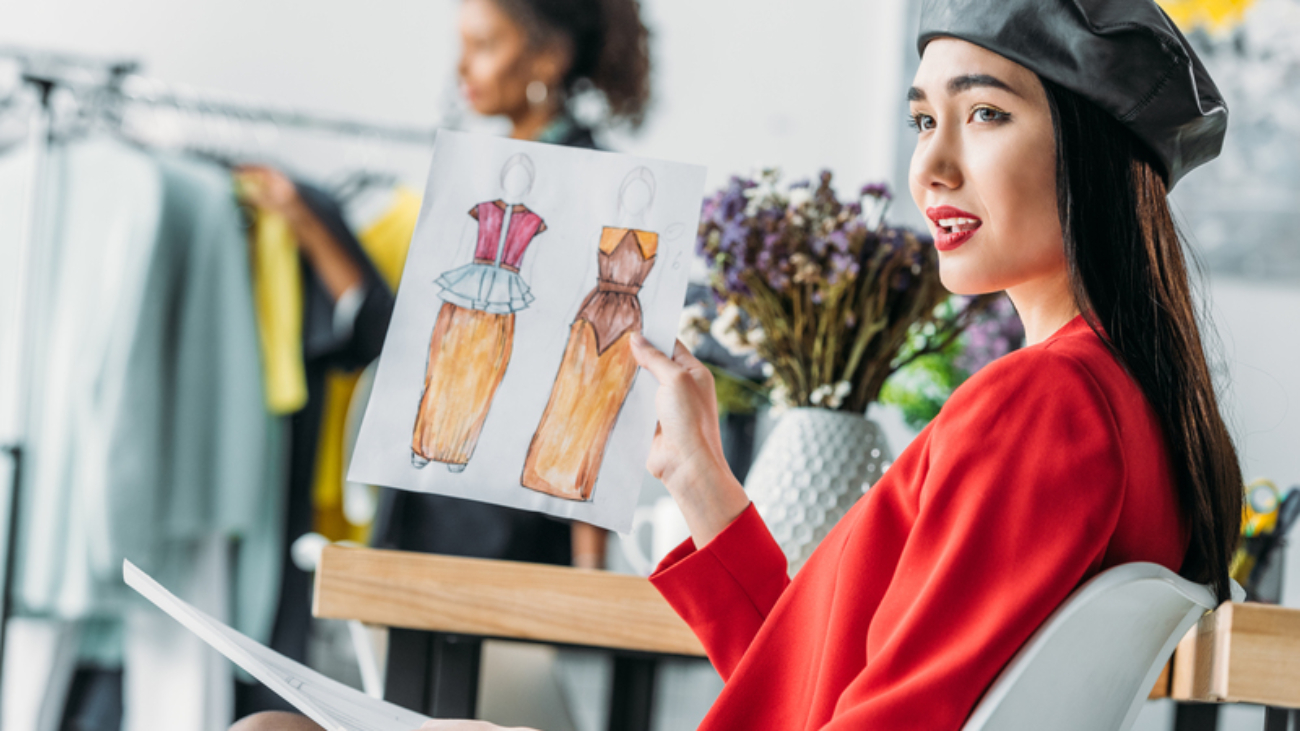1. What Is a Fashion Designer?
Fashion design is a creative and dynamic field that blends art, culture, and commerce. It involves designing and creating clothing, accessories, and footwear that reflect individual expression and societal trends. Throughout history, fashion has been a medium for communication, representing social status, political movements, and technological advancements. Today, the fashion industry is an ever-evolving landscape that requires designers to be innovative, adaptable, and business-savvy.
What Does a Fashion Designer Do?
At its core a fashion designer is a person who creates clothes, accessories and footwear, but on a deeper level a fashion designer is a person who creates original pieces of clothing, sketches new ideas, selects the right fabrics and patterns.
A fashion designer is responsible for transforming an idea into a tangible product. This process involves extensive research, sketching, selecting fabrics, and overseeing the production of garments. The role also requires keeping up with emerging trends, understanding market demands, and working with manufacturers and retailers to bring designs to consumers. Some designers work exclusively on bespoke, high-end creations, while others produce mass-market apparel, ensuring accessibility to a broader audience.
The Different Roles in Fashion Design
Fashion design is a broad field with multiple specializations, each requiring unique skills and expertise. Apparel designers focus on creating clothing for men, women, and children, which can range from everyday wear to haute couture. Footwear designers craft stylish and functional shoes, incorporating innovative materials and ergonomic principles. Accessories designers create essential fashion complements, such as handbags, hats, jewelry, and belts, that add personality and refinement to an outfit.
Overview of the Fashion Industry
The fashion industry includes:
- High Fashion (Haute Couture) – Exclusive, custom-made designs for elite clients, requiring meticulous craftsmanship.
- Ready-to-Wear (Prêt-à-Porter) – Mass-produced collections designed for retail markets but with high-quality materials.
- Fast Fashion – Affordable, trend-driven clothing produced quickly and in large quantities.
- Sustainable Fashion – Focused on ethical sourcing, eco-friendly materials, and reducing waste in production.
The fashion industry operates at different levels, from independent designers to global brands. High fashion (haute couture) consists of custom-made, hand-stitched garments designed for elite clientele. Ready-to-wear (prêt-à-porter) collections are produced in limited quantities, maintaining high quality while ensuring accessibility. Fast fashion is characterized by affordable, trend-driven designs that are mass-produced quickly to meet market demand. In contrast, sustainable fashion prioritizes ethical production, eco-friendly materials, and waste reduction.
Challenges and Rewards of a Fashion Designer Career
Fashion design is an exhilarating but demanding career. Designers often work long hours under pressure to meet deadlines and ensure their collections align with consumer preferences. The competition is fierce, requiring constant reinvention to remain relevant. However, the rewards are equally compelling—bringing unique creations to life, influencing global fashion trends, and having the opportunity to work with prestigious brands, celebrities, and clients. With dedication, talent, and business acumen, a fashion designer can establish a successful and lasting career..
Challenges:
- Highly competitive industry with rapid trend changes
- Long hours and tight deadlines
- Balancing creativity with business demands
- Managing production and supply chain logistics
Rewards:
- Seeing original designs come to life
- Influencing global fashion trends
- Opportunities to work with celebrities and brands
- Potential to build a personal brand and fashion empire
2. Developing the Right Skills
In today’s fast-paced and competitive world, developing the right skills is essential for both personal and professional success. Whether in education, business, or creative industries like fashion, having the right skill set can make a significant difference in achieving one’s goals. The ability to learn, adapt, and refine skills ensures long-term growth, opens up new opportunities, and increases overall confidence.
One of the most important reasons for skill development is career advancement. The job market is constantly evolving, with industries adopting new technologies, practices, and trends. Professionals who continuously upgrade their skills remain competitive and relevant. Employers seek individuals who can adapt quickly and bring innovative ideas to the table. Learning new skills not only enhances job performance but also increases the chances of promotions and better salary prospects.
Beyond career success, having the right skills fosters adaptability in an ever-changing world. Technological advancements, automation, and digital transformation are reshaping industries. Those who invest in learning new tools and methods are more equipped to handle these shifts, ensuring they do not fall behind. Whether it’s mastering digital marketing, data analytics, sustainable fashion design, or leadership skills, adaptability helps individuals stay ahead of the curve.
Creative and Artistic Skills
Creativity is at the heart of fashion design, enabling designers to push boundaries and redefine aesthetics. Improving creative thinking involves exposure to diverse artistic influences, such as painting, architecture, and music. Keeping a fashion journal and engaging in experimental designs can help foster originality. Building a personal aesthetic requires a deep understanding of personal inspirations and translating them into a signature style that distinguishes one’s work from others in the industry.
1. How to improve your creative thinking skills:
- Thinking outside the box with an open mind
- Delve into topics you may not usually consume
- Always be curious about everything
- Be positive so the negatives don’t stop you
- Stimulate the brain with something new in your daily routine
- Don’t be afraid to discuss with others
- Be comfortable with people watching and learning from it
- Let your ideas flow out and don’t stop them
Skills also come from within a person, most art shows an artist’s aesthetic. Being in the fashion industry, especially the design part, you have to have a look, your own personal aesthetic. Personal aesthetic is a concept of beauty or art. When you’re younger or are having a difficult time it’s difficult to find this aesthetic so here are some tips.
2. How to curate your own aesthetic:
- Create a mood/ vision board of what you like. (Using Pinterest boards is really easy)
- Find your inspiration from magazines, photos, videos etc. (Try searching ideas of different styles on TikTok and Pinterest)
- Take some quizzes online that may help you find your style. (Don’t think of the answers as a full stop, keep it as a guide of where you feel comfortable)
- Be kind to yourself, do not let the steel boxes of styles trap you. Be fluid with it.
Technical Skills
Technical skills in fashion design refer to the specialized abilities and knowledge required to bring a designer’s creative ideas to life in a practical, wearable form. These skills are essential for executing the design process from concept to final product, ensuring that garments are not only visually appealing but also functional and well-made.
1. Fashion Sketching and Illustration:
Fashion sketching and illustration are essential skills for any aspiring fashion designer. They help bring ideas to life, communicate designs effectively, and serve as a blueprint for garment production.
What is Fashion Sketching? Fashion sketching is the process of drawing clothing and accessories on a figure to visualize a design concept. These sketches can be simple outlines or detailed renderings that show textures, patterns, and movement.
Key elements:
- Garment representation
- Detailing and texture
- Color and rendering
What is Fashion Illustration? Fashion illustration goes beyond basic sketches by adding artistic elements, such as shading, vibrant colors, and background details, to create expressive and stylized representations of fashion pieces. Illustrations are often used for promotional materials, lookbooks, and fashion campaigns.
Tools:
- Traditional (pencils, pens, paper, sketchbooks)
- Digital (Adobe illustrator, procreate, Clo 3D, Marvelous designer)
2. Sewing and Garment Construction:
Essential Sewing Tools:
- Sewing Machine – A basic or industrial-grade machine for stitching garments.
- Needles & Thread – Different fabrics require specific needle sizes and thread types.
- Fabric Scissors & Rotary Cutters – For precise cutting of fabric pieces.
- Pins & Clips – To hold fabric in place before sewing.
- Measuring Tape & Rulers – For accurate measurements and pattern drafting.
- Seam Ripper – For correcting mistakes and removing stitches.
Basic Sewing Techniques:
- Straight Stitch: The most common stitch used for assembling fabric pieces.
- Backstitching: Reinforces seams by sewing forward and backward at the beginning and end.
- Zigzag Stitch: Used to prevent fabric edges from fraying.
- Blind Stitch: A nearly invisible stitch for hemming and finishing garments.
- Overlocking/Serger Stitch: Used to create professional seam finishes and prevent unraveling.
Step-by-Step Garment Construction Process:
- Pattern Making: Create a blueprint for the garment using paper or digital software.
- Fabric Selection: Choose appropriate materials based on the garment’s design, drape, and purpose.
- Cutting Fabric: Use patterns to cut fabric accurately, ensuring minimal waste.
- Marking & Pinning: Transfer markings for darts, seams, and notches onto the fabric.
- Sewing Seams: Assemble fabric pieces by sewing them together with the appropriate stitch.
- Pressing & Ironing: Iron seams and folds for a crisp and professional finish.
- Adding Details: Insert zippers, buttons, pleats, and embellishments.
- Finishing Touches: Hemming, edge finishing, and quality checking.
3. Pattern Making and Draping Techniques:
Designing an item is the beginning and sewing is the last part but there is a middle- patterns and draping. Learn how to make patterns for skirts, shirts, sneakers, boots etc. Different patterns give different results, fitting and look. Same with draping. Different drapings give different effects, you can make a fabric look like a waterfall or a flower, you can add layers, asymmetry or make it look like it’s from the renaissance era. Learning these technical skills will elevate your knowledge and ability to craft clothes.
What is Pattern Making? Pattern making is the process of creating a 2D blueprint for a garment that, when cut and sewn, forms a 3D shape. Patterns act as templates that guide the construction of each garment piece, ensuring consistency in fit and design.
Types of Pattern Making:
- Flat Pattern Making
- Uses precise body measurements to create patterns on paper or digitally.
- Adjustments can be made through techniques like dart manipulation, slashing, and spreading.
- Commonly used in mass production and ready-to-wear clothing.
- Drafting from Measurements
- Involves drawing patterns from scratch using body or standard measurements.
- Used to create customized garments for a perfect fit.
- Draping to Pattern
- A pattern is developed by draping fabric on a dress form first, then translating it into a paper or digital pattern.
Key Components of a Pattern:
- Bodice Block: The upper body section of a garment.
- Sleeve Block: The basic shape for sleeve patterns.
- Skirt Block: A template for creating skirts of various styles.
- Darts & Seam Allowances: Shaping techniques that control fit and fabric structure.
Tools for Pattern Making:
- Pattern paper or digital software (e.g., Adobe Illustrator, Clo 3D)
- Measuring tape and rulers (French curve, hip curve)
- Notcher and awl for marking patterns
- Pattern weights and tracing wheel
What is Draping? Draping is a fabric-based technique where material is pinned and shaped directly on a dress form to create garment designs. It allows designers to see how fabric naturally falls, making it useful for designing flowing dresses, gowns, and avant-garde pieces.
Steps in Draping a Garment:
- Preparing the Dress Form
- Cover the dress form with muslin or a base fabric.
- Mark key guidelines (bust, waist, hip, center front, center back).
- Positioning the Fabric
- Place fabric on the form and secure it with pins.
- Adjust the grainline to ensure the fabric hangs correctly.
- Shaping the Design
- Pin darts, pleats, and gathers to create the desired shape.
- Cut excess fabric while maintaining symmetry.
- Translating to a Pattern
- Once satisfied with the draped design, trace it onto pattern paper.
- Add seam allowances and make necessary modifications.
Advantages of Draping:
- Allows designers to experiment with different silhouettes and fabric behavior.
- Provides a visual, hands-on approach to garment development.
- Helps in designing structured or asymmetrical styles that are difficult to draft flat.
Digital Design Skills
Digital design skills refer to the abilities and techniques used to create visual content and digital experiences using digital tools and technology. These skills are essential for anyone working in fields such as graphic design, web design, UX/UI design, animation, and other creative digital professions. Digital design skills focus on creating visually engaging, functional, and user-friendly designs for various digital platforms.
1. Using CAD Software
Nowadays almost everything is digital and so are some design skills. Using CAD software to illustrate or sketch out your designs is a quick, easy and efficient way of doing things, it’s also sustainable. With this software you can make a 3D design so you can easily create all sides of a piece and see it from all angles. Some of these programs have built in design patterns and texture packs, you can usually create and add your own as well.
Key Benefits of CAD Software:
- Increases Efficiency: Designers can quickly edit and refine designs without redrawing.
- Enhances Precision: Digital tools eliminate human errors in measurements and pattern drafting.
- Saves Time & Cost: Reduces fabric waste by testing designs virtually before physical production.
- Enables Collaboration: Designs can be shared instantly with manufacturers, suppliers, and clients worldwide.
Some popular CAD software used in fashion design:
- Adobe illustrator
- CLO 3D & Browzwear
- Optitex & Gerber AccuMark
- CorelDRAW
2. Tech Packs and Digital Pattern Design
What is a Tech Pack in Fashion Design? A tech pack (technical package) is a detailed document that provides manufacturers with all the necessary information to produce a garment accurately. It serves as a blueprint that guides the production process, ensuring that the final product aligns with the designer’s vision.
Key Components of a Tech Pack:
- Flat Sketches & Technical Drawings
- Detailed front, back, and side views of the garment.
- Includes stitching details, seam placements, and finishing techniques.
- Fabric & Material Specifications
- Type of fabric (cotton, polyester, silk, etc.).
- Weight, weave, and stretch properties.
- Lining, trims, buttons, zippers, and other components.
- Measurements & Size Grading
- Exact garment measurements for different sizes (S, M, L, etc.).
- Grading rules to scale patterns proportionally across sizes.
- Colorways & Pantone Codes
- Specifies color variations and exact shades using Pantone color codes for accuracy.
- Construction & Sewing Instructions
- Stitching methods (e.g., overlock, flatlock, topstitching).
- Hem finishing, seam types, and reinforcement details.
- Artwork, Prints, & Embellishments
- Placement of logos, embroidery, and fabric prints.
- Printing techniques such as screen printing, sublimation, or heat transfer.
- Labeling & Packaging Requirements
- Care labels, wash instructions, and brand tags.
- Packaging specifications for shipping (e.g., folded or hung).
- Costing Sheet
- Breakdown of production costs, including materials, labor, and packaging.
What is Digital Pattern Design? Digital pattern design refers to creating and modifying garment patterns using computer-aided design (CAD) software instead of traditional paper-based methods. This approach improves precision, efficiency, and sustainability in fashion production.
Fashion brands use tech packs and digital patterns together to ensure efficient and accurate garment production. Here’s how they complement each other:
- Tech Packs Provide the Blueprint:
- Designers use tech packs to communicate garment specifications to manufacturers.
- Digital Patterns Ensure Accuracy:
- Manufacturers use digital patterns to create fabric-cutting layouts based on tech pack instructions.
- 3D Virtual Sampling Reduces Waste:
- Digital pattern software allows designers to visualize and adjust fit before creating physical prototypes.
- Faster Design-to-Production Process:
- Combining tech packs and digital patterns streamlines the manufacturing process and reduces lead times.
3. Educational Pathways
Educational pathways refer to the various routes or options people take to acquire knowledge, skills, and qualifications over the course of their educational journey. These pathways are typically structured to lead to different levels of education, certifications, or careers. They can vary based on an individual’s interests, goals, and personal circumstances.
Formal Education
Formal education refers to the structured, systematic form of learning that takes place in schools, colleges, universities, and other accredited institutions. It is typically guided by a set curriculum, with specific standards and goals that students are expected to meet.
1. Fashion Design Degrees: Bachelors vs. Associate Degrees
Now there is a question of what’s better: Bachelors or Associate degree. Typically a bachelor’s degree (BS) lasts around 4 years while an associate degree(AAS) is around 2 years, so you do save time. Both are an undergraduate degree but program depths are different. AAS is more focused on core courses and tends to be more vocational while BS has a broader range of courses with more electives. There is also a price difference, AAS is cheaper by usually a couple thousand dollars compared to BS.
2. Best Fashion Schools Around the World
There is the traditional way with formal education, some of the best fashion schools around the world being Fashion Institute of technology in New York, London College of Fashion in London, University of Hong Kong in Pokfulam, University of São Paulo in São Paulo, RMIT University in Melbourne.
3. Short Term Courses and Workshops
Enhancing your fashion design skills through short-term courses and workshops can provide valuable hands-on experience and industry insights. Here are some notable programs to consider:
- Condé Nast College of Fashion & Design (London, UK)
- Kraków School of Art and Fashion Design (Kraków, Poland)
- Chanels Métiers d’Art Fellowship
- Lesage Embroidery Workshops (Paris, France)
- Penneys’ Free Clothing Repair Workshops
Alternative Learning Paths
Alternative learning paths are non-traditional routes to gaining skills and knowledge outside of conventional education systems, like universities or colleges. These paths can be flexible, practical, and tailored to individual goals and career aspirations. They are increasingly popular as people seek more direct and hands-on approaches to learning.
1. Self-Taught Designers and Online Courses:
Self-Taught Fashion Designers:
- Coco Chanel: Founder of the iconic Chanel brand, she began her career as a singer before venturing into hat-making and, eventually, fashion design.
- Vivienne Westwood: Known for her punk-inspired designs, Westwood started without formal training, learning through hands-on experience and experimentation.
- Michael Kors: Kors launched his fashion line at 19, relying on innate talent and practical experience rather than formal education.
Online Fashion Design Courses:
- University of Fashion: An online library offering video lessons on draping, patternmaking, sewing, fashion art, and more, taught by fashion school professors and industry professionals.
- Coursera: Provides courses like “Fashion as Design” from the Museum of Modern Art, covering various aspects of fashion design and history.
- Udemy: Offers courses such as “Learn to Draw Fashion with Adobe Illustrator,” focusing on digital fashion illustration skills.
- Skillshare: Features classes like “Fashion Design: Introduction to Hand-Drawn Technical Flats,” teaching essential skills for creating detailed fashion sketches.
2. Mentorships and Apprenticeships:
Gaining mentorship and apprenticeship experiences is pivotal for aspiring fashion designers, offering practical insights and industry connections. Here are some notable programs and initiatives to consider:
- LVMH prize for young fashion designers
- Fashion east
- Studio Bercot
- Chanels Metiers d’Art fellowship
3. Learning Through Internships:
Internships are one of the most effective ways for aspiring fashion designers to gain real-world experience. They provide hands-on learning opportunities, exposure to industry professionals, and a better understanding of how the fashion business operates.
Top Fashion Companies Offering Internships:
- LVMH (Louis Vuitton, Dior, Fendi, etc.) – Offers internships in design, marketing, and production.
- Chanel – Provides internships in luxury fashion design and craftsmanship.
- H&M Group – Focuses on fast fashion design, merchandising, and sustainability.
- Nike and Adidas – Have internship programs for fashion and footwear design.
- Vogue and Harper’s Bazaar – Offer internships for those interested in fashion journalism and styling.
Continue Reading:
How to Become a Fashion Designer? / Part 1
How to Become a Fashion Designer? / Part 2
How to Become a Fashion Designer? / Part 3
How to Become a Fashion Designer? / Part 4
How to Become a Fashion Designer? / Part 5
How to Become a Fashion Designer? / Part 6
How to Become a Fashion Designer? / Part 7
Written by Urtė Mikaitė




Add a Comment